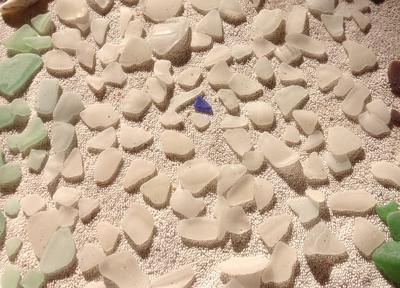Why Airlines Continue to Eschew Third-Party Travel Sites
Over the last 20 years or so, airlines have experimented with many ways to lure consumers away from online travel agencies (OTAs) and toward their own websites. The most effective strategy so far: prevent OTAs (and apps such as Hopper) from displaying their prices. Southwest has long prevented third-party sites and apps from selling its fares, which is why you’ll never see Southwest on Google Flights or Priceline. Delta Air Lines over the last few years has withdrawn permission to display its fares on about 30 sites and apps, such as Hipmunk, Fare Compare, and Hopper.
And now jetBlue has removed permission for a dozen mostly small OTAs (most notably Vayama) to sell its fares.
Other tactics in this assault on OTAs include offering more frequent flier miles or points if booked directly with the airline, promo codes which can only be redeemed on the airlines’ websites, and ticket discounts (for example, British Airways offers lower fares to AARP members, but only if booked at BA.com).
An industry insider told me that Delta may one day add larger OTAs to its “banned list” and jetBlue in its announcement restricting access to those 12 sites hinted that it might not be finished limiting access to its inventory.
There are several reasons why airlines are divorcing from third-party sites, but there are still some good reasons why consumers should consider OTAs anyway.
I recently searched for a flight from New York to Detroit on Expedia.com and compared the same flights and dates on Jetblue.com, leaving January 23 returning January 30. The experiences could hardly be more different. jetBlue shows three airfare classes: “Blue,” “Blue Plus” which includes a free checked bag, and “Blue Flex” which includes two free checked bags and free changes or cancellations. The lowest “Blue” fare for those dates, on connecting flights, is $191.62 round-trip per person on JetBlue.com.
Then I looked at Expedia to book my imaginary New York to Detroit trip. It only showed the lowest “Blue” fare on jetBlue, which means the airline misses a chance to lure consumers into other fare options. JetBlue also forfeits any opportunity to market its credit cards, vacations, and other products if a consumer doesn’t book directly on Jetblue.com. Plus, the airline probably has to pay Expedia for a referral (although exactly what OTAs charge airlines and hotels for sending them business is a closely guarded secret).
Free airfare if I book a hotel?
In any case, Expedia had other plans for me. It didn’t suggest that I fly on jetBlue at all. Rather, it offered a nonstop basic economy airfare (meaning I’d have to pay for a carryon bag unless I have status in American’s frequent flier program or carry one of their co-branded credit cards) on the outbound flight with a return on Delta, and further suggested that if I book a one-week hotel stay at the Comfort Inn Metro Airport along with my airfare, then the airfare would actually be free. Really now?





 The finished pieces are perfectly edible, but in reality most are not eaten. It is not sugar candy in the modern sense. It is a mixture of powdered sugar and egg white, with colors added depending on what the paste will be used for. In the case of skulls, the base is thicker and formed with a mold. The decorative elements are made with a softer paste that is piped on, much the way that decorative icing is applied onto fine bakery cakes. Both harden to something that is not only very hard to break with the teeth, but really does not melt in the mouth (a la Jolly Ranchers) because of the protein in the egg whites. In the past, they were certainly eaten as sugar used to be an expensive commodity. But today, if one wants skulls or other decorations that can truly be enjoyed as candy, items made from other materials can be had. At the Feria de Alfeñique, artisans demonstrate skills in making items from chocolate, amaranth (a nod to the past), tamarid, peanut marzapan, wafers and pepita (a sweet paste made from pumpkin seeds). While skulls are still central, the Toluca event also features other items such as coffins, miniatures of food items often found on Day of the Dead altars, (mole, breads, fruits…), full skeletal figures and animals, in particular deer.
The finished pieces are perfectly edible, but in reality most are not eaten. It is not sugar candy in the modern sense. It is a mixture of powdered sugar and egg white, with colors added depending on what the paste will be used for. In the case of skulls, the base is thicker and formed with a mold. The decorative elements are made with a softer paste that is piped on, much the way that decorative icing is applied onto fine bakery cakes. Both harden to something that is not only very hard to break with the teeth, but really does not melt in the mouth (a la Jolly Ranchers) because of the protein in the egg whites. In the past, they were certainly eaten as sugar used to be an expensive commodity. But today, if one wants skulls or other decorations that can truly be enjoyed as candy, items made from other materials can be had. At the Feria de Alfeñique, artisans demonstrate skills in making items from chocolate, amaranth (a nod to the past), tamarid, peanut marzapan, wafers and pepita (a sweet paste made from pumpkin seeds). While skulls are still central, the Toluca event also features other items such as coffins, miniatures of food items often found on Day of the Dead altars, (mole, breads, fruits…), full skeletal figures and animals, in particular deer.